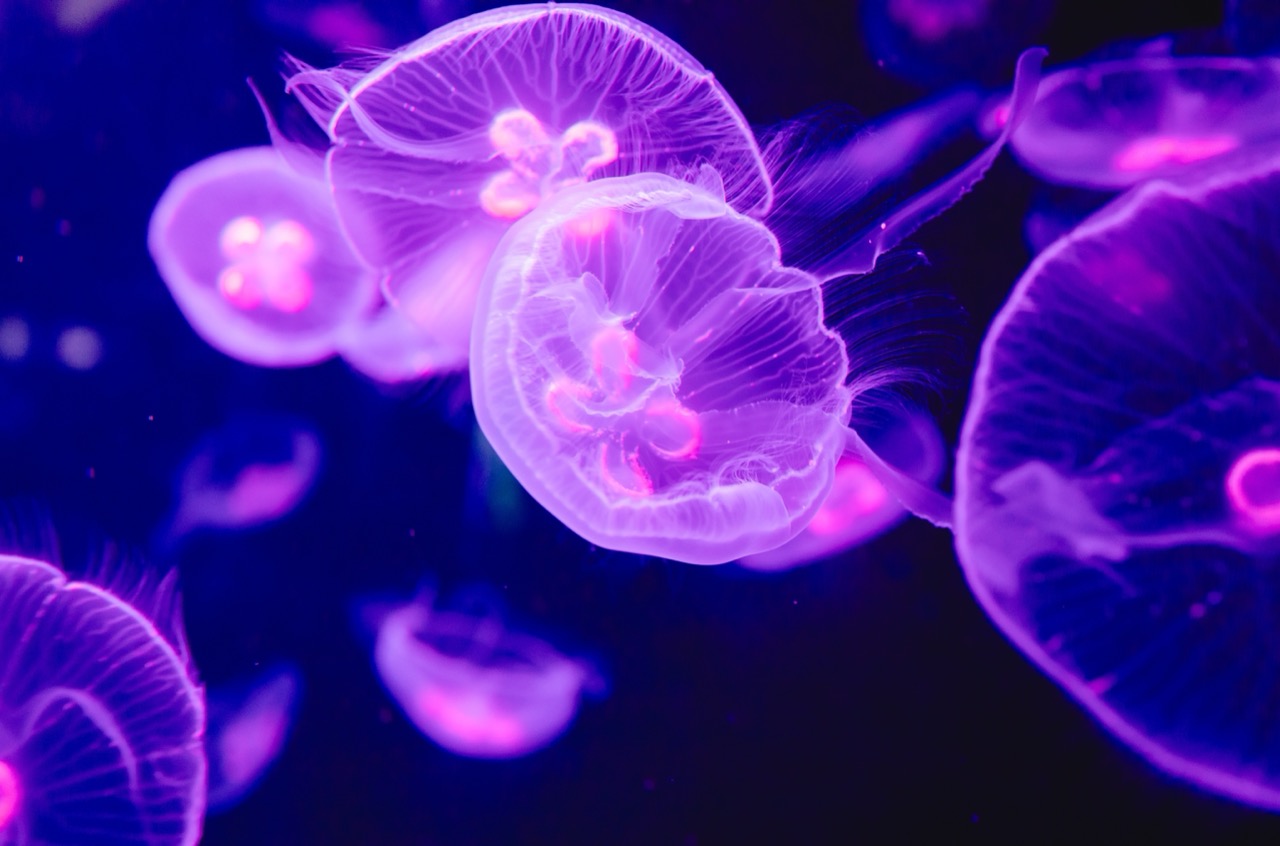Jellyfish, with their translucent bells and trailing tentacles, have captivated human interest for centuries. These ethereal creatures, often seen as mere drifters of the sea, play a significant role in the marine ecosystem. Their unique anatomy allows them to pulse along on ocean currents, and their sudden blooms can either be a spectacle of natural beauty or a harbinger of imbalance in marine environments. Despite their simple appearance, jellyfish are complex beings that offer insights into the resilience and adaptability of life under the sea.
Characteristics / Physical Description
Jellyfish, or jellies as they are sometimes called, are members of the phylum Cnidaria, which also includes corals and sea anemones. A typical jellyfish features a bell-shaped body and tentacles that hang beneath. These tentacles are equipped with specialized cells known as cnidocytes, which contain stinging structures to capture prey or defend against predators. The body is mostly made up of a gelatinous substance called mesoglea, with an outer layer that protects and contains the inner organs. Some species can display bioluminescence, producing light through chemical reactions within their bodies.
Taxonomy and Classification
Jellyfish belong to several different classes within the phylum Cnidaria, primarily Scyphozoa (true jellyfish), Cubozoa (box jellyfish), and Hydrozoa (which includes the Portuguese man o’ war, technically not a true jellyfish but a siphonophore). These classes differ in aspects of their life cycle, morphology, and habitat preferences.
Behavior and Social Structure
Jellyfish are not social creatures in the traditional sense; they do not form bonds or groups. However, many species are known to aggregate in large numbers when conditions are favorable, such as during certain seasons or in nutrient-rich waters. This behavior can lead to spectacular swarms, known as blooms, which can have significant ecological and economic impacts.
Habitat and Distribution
Jellyfish are found in every ocean of the world, from the surface to the deep sea. Some species prefer coastal areas while others inhabit open ocean environments. Their presence across various marine environments shows their adaptability and the wide range of habitats that can support their life cycles.
Diet and Feeding Habits
Jellyfish are typically carnivorous, feeding on a diet of plankton, small fish, fish eggs, and other small marine organisms. They capture their prey either by passive drifting, where they catch whatever comes into contact with their tentacles, or by active hunting, which involves moving toward their prey.
Breeding and Reproduction
Most jellyfish go through a complex life cycle that includes both asexual and sexual phases. The most visible stage, the medusa, is usually sexually mature and releases eggs and sperm into the water to reproduce. These gametes develop into larvae which settle on the seabed, growing into polyps that can asexually produce more medusas.
Relationship with Humans
Human interactions with jellyfish are mostly negative, as they can pose hazards to swimmers and clog fishing nets. However, certain species are harvested for food, particularly in Asian cuisines. Jellyfish stings, while usually not fatal, can cause pain and irritation, and in some cases, severe medical reactions.
Evolutionary History
Jellyfish are among the oldest multicellular organisms on Earth, with fossils dating back over 500 million years. This long evolutionary history indicates their success in adapting to changing oceanic environments and their resilience as a species.
Use as Research Animals
Jellyfish have contributed to various fields of biological research, including the study of nervous systems and developmental biology. The green fluorescent protein (GFP), originally discovered in the jellyfish Aequorea victoria, has become a vital tool in molecular and cellular biology.
Jellyfish continue to intrigue and challenge our understanding of marine life. As indicators of ocean health and as subjects of scientific study, they provide valuable insights into the complex interdependencies within marine ecosystems.

